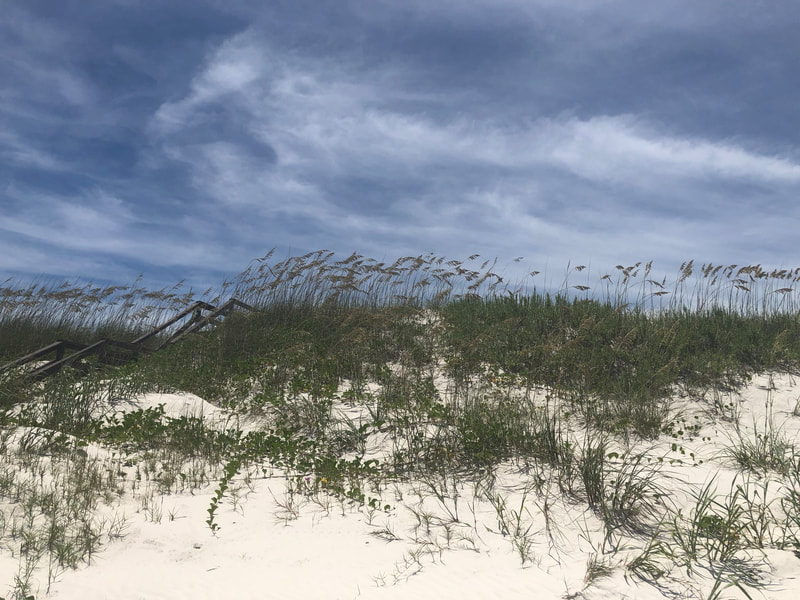Sea Oats (Uniola paniculata)
Prefers a lot of sun.
Low water needs.
Size: 4-6ft tall
Absolutely vital for coastal dunes, sea oats are a quintessential Florida beach grass. They thrive in the hot sands, where the top layer can reach temperatures between 120⁰ and 127⁰ F. These plants are important in the preservation of Florida sand dunes. Once a plant is established, their roots can reach up to 30 feet long. The roots and rhizomes help to stabilize shifting sands, thereby preventing erosion. The base of these sand dunes is where highly endangered sea turtles lay their eggs. The dried seeds are food for animals like the beach mouse and songbirds.
http://florida.plantatlas.usf.edu/Plant.aspx?id=2063
http://fnpsblog.blogspot.com/2012/02/plant-profile-sea-oats-uniola.html
Low water needs.
Size: 4-6ft tall
Absolutely vital for coastal dunes, sea oats are a quintessential Florida beach grass. They thrive in the hot sands, where the top layer can reach temperatures between 120⁰ and 127⁰ F. These plants are important in the preservation of Florida sand dunes. Once a plant is established, their roots can reach up to 30 feet long. The roots and rhizomes help to stabilize shifting sands, thereby preventing erosion. The base of these sand dunes is where highly endangered sea turtles lay their eggs. The dried seeds are food for animals like the beach mouse and songbirds.
http://florida.plantatlas.usf.edu/Plant.aspx?id=2063
http://fnpsblog.blogspot.com/2012/02/plant-profile-sea-oats-uniola.html

